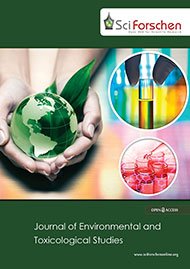
Assistant Professor Environmental Science
- Department of Environmental Science
Baylor University
Waco, Texas, USA
Phone: (254) 710-2468
Email: ramon_lavado@baylor.edu
Education
Institution |
Discipline |
Degree |
University of California Riverside |
Aquatic Toxicology |
Post-doc, 2006-2011 |
University of Barcelona |
Spain Animal Physiology |
PhD, 2001-2005 |
University of Barcelona, |
Spain Biological Sciences |
BSc, 1995-1999 |
Biography
As an assistant professor of environmental science at Baylor University, Dr. Lavado conducts research in the field of environmental toxicology specializing in the biotransformation of contaminants in aquatic wildlife. His research focuses in the mechanistical insights in the chemical modifications made by an aquatic organism on a chemical compound and development of bioassays for detecting pollutants in the environment.
Dr. Lavado has published environmental toxicology research for the last thirteen years, with projects covering a wide variety of organisms and in vitro systems. Areas of ongoing research includes 1) the development of new in vitro bioassays to detect endocrine disruptor compounds in the environment; 2) evaluation of mechanistical responses of cytochrome P450 -one of the most important enzyme systems involved in biological activation or detoxification of chemical compounds; 3) evaluation of possible biotransformation enzymes for their use as biomarkers in vertebrates and invertebrates and 4) the study of interactions between multiple stressors (as climate change effects with pollutants exposure) and its effect in the biotransformation of pollutants.Research Interest
- Aquatic Toxicology,
- Biomarkers, Biotransformation,
- Ecotoxicology,
- Endocrine Disruption,
- Environmental Toxicology,
- Molecular Toxicology,
- Multiple Stressors
Scientific Activities:
Awards and Honors
Marie Curie International Incoming Fellowship (IIF), European Commission, 2012-2013.
Publications
- Maldonado, A., Lavado, R., Knutson, S., Slattery, M., Goldstone, J.V., Watanabe, K., Hoh, E., Gadepalli, R.S., Rimoldi, J.M., Ostrander, G.K. and Schlenk, D. Biochemical mechanisms for geographical adaptations to novel toxin exposures in butterflyfish. PLOS One (2016), doi:10.1371/journal.pone.0154208
- Crago, J., Tran, K., Budicin, A., Schreiber, B., Lavado, R. and Schlenk, D. Exploring the impacts of two separate mixtures of pesticide and surfactants on estrogenic activity in male fathead minnows and rainbow trout. Archives of Environmental Contamination and Toxicology 68 (2015), 362-370.
- Maryoung, L.A., Lavado R. and Schlenk, D. Impacts of hypersaline acclimation of the acute toxicity of the organophosphate chlorpyrifos to salmonids. Aquatic Toxicology 152 (2014), 284-290.
- Forsgren, K.L., Qu, S., Lavado, R., Cwiertny, D. and Schlenk, D. Trenbolone acetate metabolites promote ovarian growth and development in adult Japanese medaka (Oryzias latipes). General and Comparative Endocrinology 202 (2014), 1-7.
- Lyons, K., Lavado, R., Schlenk, D. and Lowe, C. Bioaccumulation of organochlorine contaminants and EROD activity in southern California round stingrays (Urobatis halleri) exposed to planar aromatic compounds. Environmental Toxicology and Chemistry 33 (2014), 1380-1390.
- Lavado, R., Li, J., Rimoldi, J.M. and Schlenk D. Evaluation of the stereoselective biotransformation of permethrin in human liver microsomes: contributions of cytochrome P450 monooxygenases to the formation of estrogenic metabolites. Toxicology Letters 226 (2014), 192-197.
- Lavado, R., Aparicio-Fabre, R. and Schlenk, D. Effects of salinity acclimation on the expression and activity of Phase I enzymes (CYP450 and FMOs) in coho salmon (Oncorhynchus kisutch). Fish Physiology and Biochemistry 40 (2014), 267-278.
- Lavado, R., Aparicio-Fabre, R. and Schlenk, D. Effects of salinity acclimation on the pesticide-metabolizing enzyme flavin-containing monooxygenase (FMO) in rainbow trout (Oncorhynchus mykiss). Comparative Biochemistry and Physiology Part C 157 (2013), 9-15.
- Schlenk, D., Lavado, R., Loyo-Rosales, J.E., Jones, W., Maryoung, L., Riar, N., Werner, I. and Sedlak, D. Reconstitution studies of pesticides and surfactants exploring the cause of estrogenic activity observed in surface waters of the San Francisco Bay Delta. Environmental Science and Technology 46 (2012), 9106-9111.
- Bulloch, D.N., Lavado, R., Forsgren, K.L., Szabolcs, B., Schlenk, D. and Larive, C.K. Analytical and biological characterization of halogenated gemfibrozil produced through chlorination of wastewater. Environmental Science and Technology 46 (2012), 5583-5589.
- Lavado, R., Shi, D. and Schlenk, D. Effects of salinity on the toxicity and biotransformation of L-selenomethionine in Japanese medaka (Oryzias latipes) embryos: mechanisms of oxidative stress. Aquatic Toxicology 108 (2012), 18-22.
- Schlenk, D. and Lavado, R. Impacts of climate change on hypersaline conditions of estuaries and xenobiotic toxicity. Aquatic Toxicology S105 (2011), 78-82.
- Lavado, R., Maryoung, L.A. and Schlenk, D. Hypersaline acclimation increases the toxicity of the insecticide phorate in coho salmon (Oncorhynchus kisutch). Environmental Science and Technology 45 (2011), 4623-4629.
- Lavado, R. and Schlenk, D. Microsomal biotransformation of chlorpyrifos, parathion and fenthion in rainbow trout (Oncorhynchus mykiss) and coho salmon (Oncorhynchus kisutch): Mechanistic insights into interspecific differences in toxicity. Aquatic Toxicology 101 (2011), 57-63.
- Nillos, M.G., Chajkowski, S., Rimoldi, J.M., Gan, J., Lavado, R. and Schlenk, D. Stereoselective biotransformation of permethrin to estrogenic metabolites in fish. Chemical Research in Toxicology 23 (2010), 1568-1575.
- Lavado, R., Loyo-Rosales, J.E., Floyd, E., Kolodziej, E.P., Snyder, S.A., Sedlak, D.L. and Schlenk, D. Site-specific profiles of estrogenic activity in agricultural areas of California’s inland waters. Environmental Science and Technology 43 (2009), 9110-9116.
- Barbaglio, A., Biressi, A., Melone, G., Bonasoro, F., Lavado, R., Porte C. and Candia Carnevali, M.D. Reproductive cycle of Antedon mediterranea (Crinoidea, Echinodermata): correlation between morphology and physiology. Zoomorphology 128 (2009), 119-134.
- Lavado, R., Rimoldi, J.M. and Schlenk, D. Mechanisms of fenthion activation in rainbow trout (Oncorhynchus mykiss) acclimated to hypersaline environments. Toxicology and Applied Pharmacology 235 (2009), 143-152.
- Coronado, M., De Haro, H., Deng, X., Rempel, M.A., Lavado, R. and Schlenk, D. Estrogenic activity and reproductive effects of the UV-filter oxybenzone (2-hydroxy-4-methoxyl-methanone) in fish. Aquatic Toxicology 90 (2008), 182-187.
- Matsuo, A.Y.O., Gallagher, E.P., Trute, M., Stapleton P.L., Lavado, R. and Schlenk, D. Characterization of phase I biotransformation enzymes in Coho salmon (Oncorhynchus kisutch). Comparative Biochemistry and Physiology Part C 147 (2008), 78-84.
- Barbaglio, A., Sugni, M., Di Benedetto, C., Bonasoro, F., Schnell, S., Lavado, R., Porte, C. and Candia Carnevali, M.D. Gametogenesis correlated with steroid levels during the gonadal cycle of the sea urchin Paracentrotus lividus (Echinodermata: Echinoidea). Comparative Biochemistry and Physiology Part A 147 (2007), 466-474.
- Lavado, R., Sugni, M., Candia Carnevali, M.D. and Porte, C. Triphenyltin alters androgen metabolism in the sea urchin Paracentrotus lividus. Aquatic Toxicology 79 (2006), 247-256.
- Schulte-Oehlmann, U., Albanis, T., Allera, A., Bachmann, J., Berntsson, P., Beresford, N., Candia Carnevali, C., Ciceri, F., Dagnac, T., Falandysz, J., Galassi, S., Hala, D., Janer, G., Jeannot, R., Jobling, S., King, I., Klingmüller, D., Kloas, W., Ole Kusk, K., Lavado, R., Lo, S., Lutz, I., Oehlmann, J., Oredsson, S., Porte, C., Rand-Weaver, M., Sakkas, V., Sugni, M., Tyler, C., van Aerle, R., van Ballegoy, C. and Wollenberger, L. COMPRENDO: Focus and Approach. Environmental Health Perspectives 114 (2006), 98-100.
- Lavado, R., Janer, G. and Porte, C. Steroid levels and steroid metabolism in the mussel Mytilus edulis: the modulating effect of dispersed crude oil and alkylphenols. Aquatic Toxicology S78 (2006), 65-72.
- Lavado, R., Barbaglio, A., Candia Carnevali, M.D. and Porte, C. Steroid levels in crinoid echinoderms are altered by exposure to model endocrine disruptors. Steroids 71 (2006), 489-497.
- Barbaglio, A., Mozzi, D., Sugni, M., Tremolada, P., Lavado, R., Porte C. and Candia Carnevali, M.D. Effects of exposure to ED contaminants (TPT-Cl and Fenarimol) on crinoid echinoderms: comparative analysis of regenerative development and correlated steroid levels. Marine Biology 149 (2006), 65-77.
- Martin-Skilton, R., Lavado, R., Thibaut, R. and Porte, C. Evidence of endocrine alteration in the red mullet, Mullus barbatus, from the NW Mediterranean. Environmental Pollution 141 (2006), 60-68.
- Lavado, R., Urena, R., Martín-Skilton, R., Torreblanca, A., del Ramo, J., Raldua, D. and Porte, C. The combined use of chemical and biochemical markers to assess water quality along the Ebro River. Environmental Pollution 139 (2006), 330-339.
- Janer, G., Lavado, R., Thibaut, R. and Porte, C. Effects of 17beta-estradiol exposure in the mussel Mytilus galloprovincialis: a possible regulating role for steroid acyltransferases.
- Aquatic Toxicology 75 (2005), 32-42.
- Lavado, R., Raldua, D., Thibaut, R., Martin, R. and Porte, C. First evidence of endocrine disruption in feral carp from the Ebro River. Toxicology and Applied Pharmacology 196 (2004), 247-257.
- Janer, G., Lavado, R., Thibaut, R. and Porte, C. Effects of 17beta-estradiol exposure in the mussel Mytilus galloprovincialis. Marine Environmental Research 58 (2004), 443-446.
- Fernandes, D., Potrykus, J., Morsiani, C., Raldua, D., Lavado, R. and Porte, C. The combined use of chemical and biochemical markers to assess water quality in two low-stream rivers (NE Spain). Environmental Research Section A 90 (2002), 169-178.
Book Chapters
- Bulloch, D., Lavado, R. and Schlenk D. Bioassay guided fractionation (Toxicity Identification and Evaluation) for the determination of estrogenic agents in environmental samples. In: Contaminants of Emerging Concern in the Environment: Ecological and Human Health Considerations. ACS Symposium Series Volume 1048, ACS Press. Chapter 26, pp 519-537.

